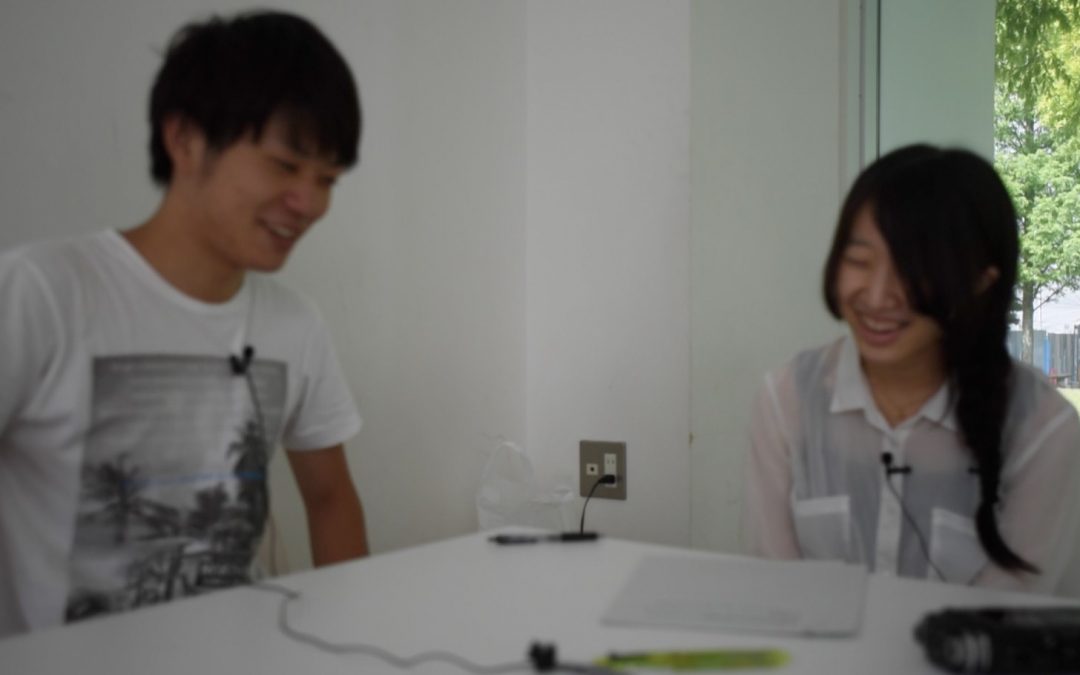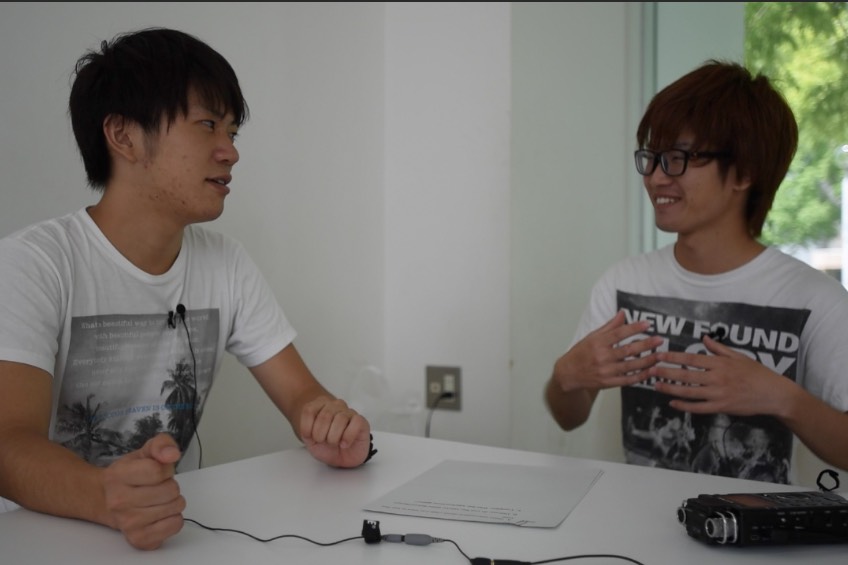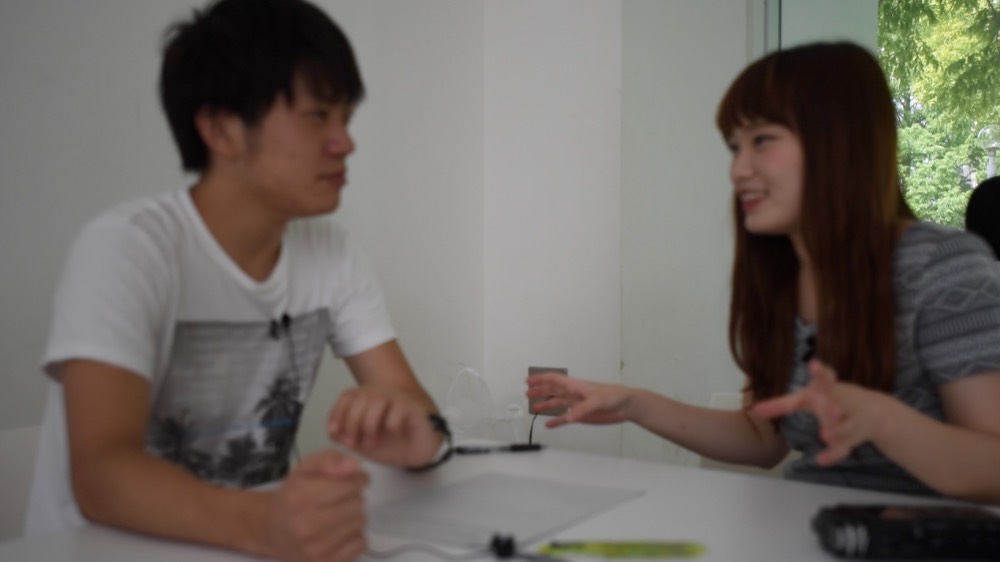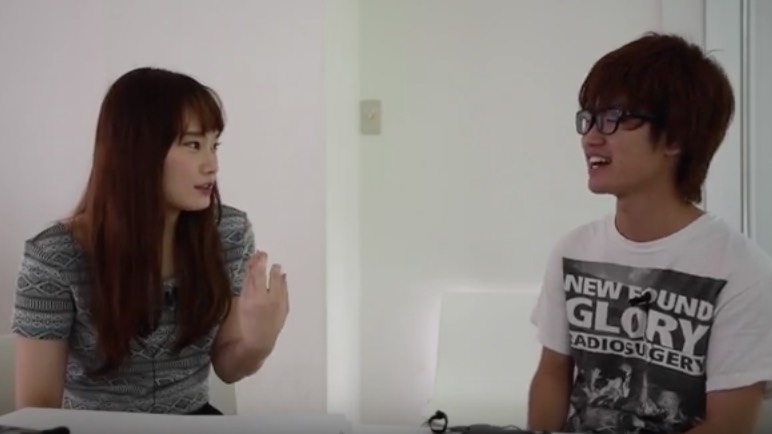
Conversations Basic 7
Conversation Analysis
Each conversation is accompanied by an analysis to give a quick evaluative summation of the students’ performance along with a recommendation of how the students could do better. Various patterns of fluency and dysfluency might be cited if the issue is relevant to the video / transcript.
View Sessions by Type
The Buttons
below provide access to our archive by session, level or type
Basic
Advanced
Type
BASIC LEVEL
Session 7

Yuusei and Harumi
(This conversation has no video)
This discussion in session eight between Yuusei and Harumi shows a relatively low speaking rate, with Harumi having a speaking rate (A) of 59.5 as well as having a short MLR of 5.1. Her responses tend to be quite passive and uninformative and again her number of words are almost half of that of Yuusei’s. Yuusei’s articulation rate is a bit faster 1.8 to 1.1 but his speaking rate is 40 points higher than Harumi’s. However, Yuusei’s amount of silence is quite high 35.1 seconds compared to Harumi’s of 2.2. Lexical dysfluency is low but in syntactic dysfluency, there is a lot of repetition from both speakers. In short, this is a situation in which both speakers can bring far more to the table and to be more confident in their production.

Yuusei and Ryutaro
This discussion between Yuusei and Ryutaro show a relatively average speaking rate, with Yuusei having far more number of words than Ryutaro, 451 to 260, who uses far too many minimal responses. Acoustic dysfluency is low, as is the overall amount of silence for both speakers 1.5%, with no cross-talk pausing. Both speakers are animated and fully engaged. Lexical dysfluency is extremely low, as is syntactic dysfluency. MLRs are relatively high for both speakers, 19.3 and 12.2, despite Ryotaro’s minimal responses. In short, this interaction about shopping and anime easily shows that dysfluency can be masked, insofar that Ryutaro did have a few very long responses that balanced out his rather short replies.

Harumi and Ryutaro
This discussion between Harumi and Ryutaro shows again a relatively low speaking rate for Harumi and relatively high rate for Ryutaro. Acoustic dysfluency is average, 5.8% or 37.3 seconds, and the conversation has no cross-talk pausing. It is quite animated, but there are too many minimal responses on the part of both. Harumi has 5.1 syllables syllables for her mean length runs while Ryutaro has 9.5. Again the mail dominates in the number of words produced with 371 and 205, and there is a bit too much repetition by both of the participants. This goes to show that while an interchange can be quite animated, the actual fluency can be quite low. The dysfluency is hidden by the minimal responses on the part of both participants.

Natsumi and Harumi
This conversation between Harumi and Natsumi shows a relatively average speaking rate for Natsumi (90.5) and a low one for Harumi (65.7). This is one of the more unbalanced intragender interactions in the corpus, with Natsumi having almost three times the number of words than Harumi. While acoustic dysfluency is relatively low at 18.9 seconds of silence or 3.2%, and only 5.6 cross-talk pausing, and with lexical dysfluency also being low, there is an illusion of fluency, but the low speaking rate does take a toll, as does the issues in syntactic dysfluency, with a lot of retracing on the part of Natsumi, 17 occurrences, and repetition, 42, occurrences. Harumi also had a high rate in this regard, 27. As for MLRs Harumi only had 4.4 compared to Natsumi’s 10.7. Meaningless syllables were also very high for both speakers, which makes this interaction, while animated, difficult to listen to.

Yuusei and Natsumi
This discussion between Natsumi and Yuusei show a relatively high speaking rate, with Natsumi having a speaking rate (A) of 92.3 while the male speaker has rate of 124.9, and the overall percentage of silence for the entire conversation was only 2.6%. Thus, acoustic, lexical, and syntactic dysfluency is relatively low though issues do remain with mean length runs (MLRs) which are relatively short, and with repetition, and meaningless syllables. However, in listening to the video, it becomes apparent that the high level of repetition and rephrasing found in Natsumi’s speech can make listening slightly irritating, but comprehension is unimpaired. Again, it is easy to see how minimal responses can impact the overall message, and again, more production and more explanation from the two speakers would make the interaction even more pleasant.

Natsumi and Ryutaro
This discussion between Natsumi and Ryutaro shows a low speaking rate with a lot of minimal responses. This does make for difficult listening, but the amount of silence is very low (1.8%) and the participants were engaged and motivated. There was a very high rate of retracing and repetition with Natsumi, and both had a high rate of meaningless syllables. This discussion shows the need to provide far more information in our replies, giving more details, even a story or an example. Again, this interaction shows more about the nature of dysfluency than fluency.
